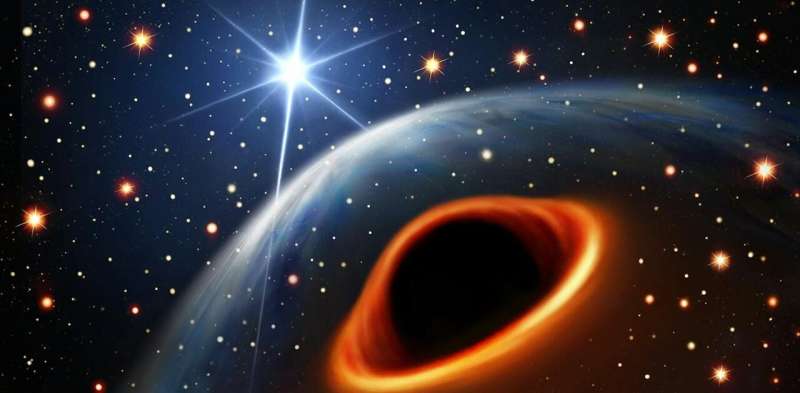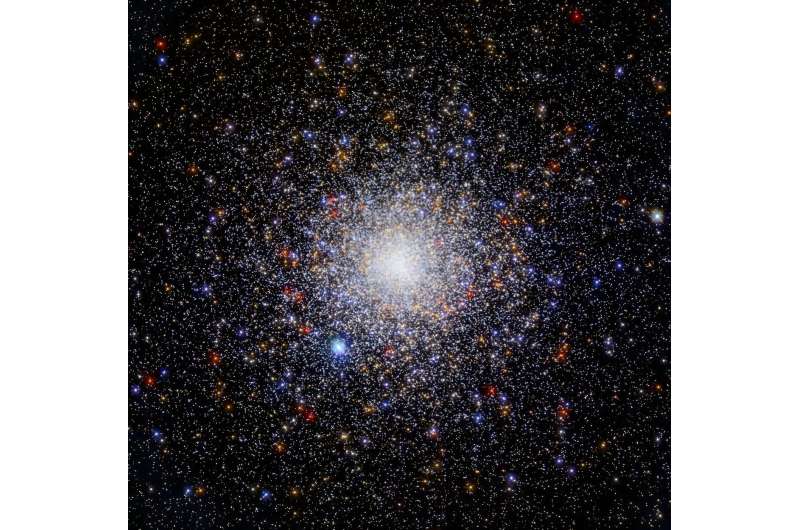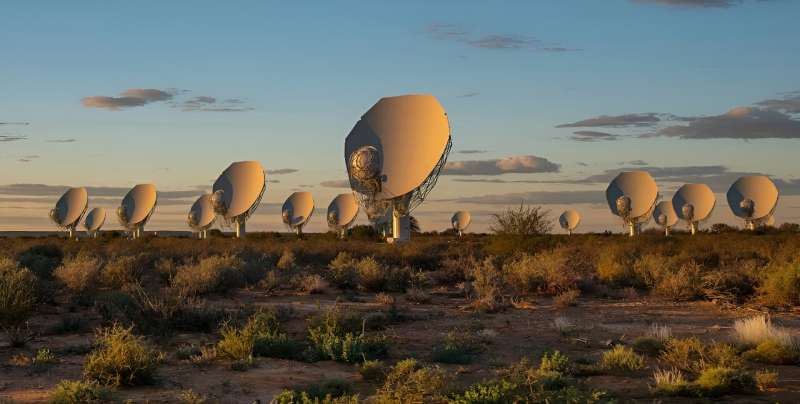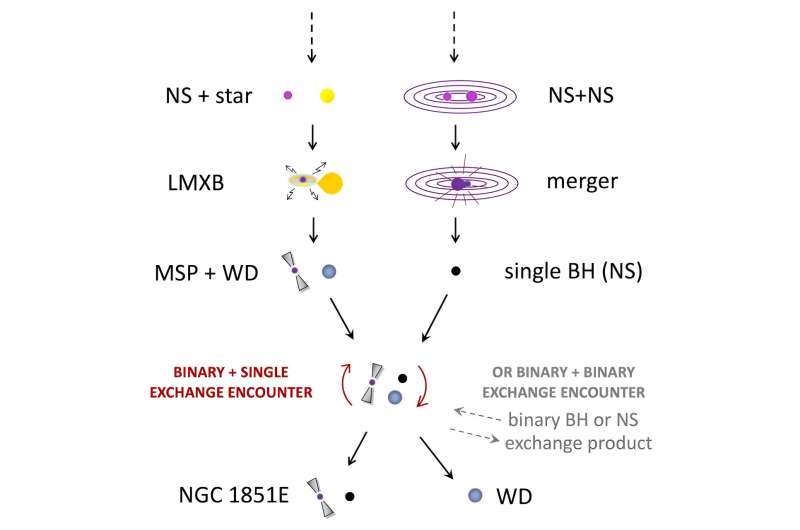This article has been reviewed according to Science X's editorial process and policies. Editors have highlighted the following attributes while ensuring the content's credibility:
fact-checked
peer-reviewed publication
trusted source
written by researcher(s)
proofread
Black hole, neutron star or something new? We discovered an object that defies explanation

Sometimes astronomers come across objects in the sky that we can't easily explain. In our new research, published in Science, we report such a discovery, which is likely to spark discussion and speculation.
Neutron stars are some of the densest objects in the universe. As compact as an atomic nucleus, yet as large as a city, they push the limits of our understanding of extreme matter. The heavier a neutron star is, the more likely it is to eventually collapse to become something even denser: a black hole.
These astrophysical objects are so dense, and their gravitational pulls so strong, that their cores—whatever they may be—are permanently shrouded from the universe by event horizons: surfaces of perfect darkness from which light cannot escape.
If we are to ever understand the physics at the tipping point between neutron stars and black holes, we must find objects at this boundary. In particular, we must find objects for which we can make precise measurements over long periods of time. And that's precisely what we've found—an object that is neither obviously a neutron star nor a black hole.
It was when looking deep in the star cluster NGC 1851 that we spotted what appears to be a pair of stars offering a new view into the extremes of matter in the universe. The system is composed of a millisecond pulsar, a type of rapidly spinning neutron star that sweeps beams of radio light across the cosmos as it spins, and a massive, hidden object of unknown nature.

The massive object is dark, meaning it is invisible at all frequencies of light—from the radio to the optical, X-ray and gamma-ray bands. In other circumstances this would make it impossible to study, but it is here that the millisecond pulsar comes to our aid.
Millisecond pulsars are akin to cosmic atomic clocks. Their spins are incredibly stable and can be precisely measured by detecting the regular radio pulse they create. Although intrinsically stable, the observed spin changes when the pulsar is in motion or when its signal is affected by a strong gravitational field. By observing these changes we can measure the properties of bodies in orbits with pulsars.
Our international team of astronomers has been using the MeerKAT radio telescope in South Africa to conduct such observations of the system, referred to as NGC 1851E.
These allowed us to precisely detail the orbits of the two objects, showing that their point of closest approach changes with time. Such changes are described by Einstein's theory of relativity and the speed of a change tells us about the combined mass of the bodies in the system.

Our observations revealed that the NGC 1851E system weighs almost four times as much as our sun, and that the dark companion was, like the pulsar, a compact object—much denser than a normal star. The most massive neutron stars weigh in at around two solar masses, so if this were a double neutron star system (systems that are well known and studied) then it would have to contain two of the heaviest neutron stars ever found.
To uncover the nature of the companion, we would need to understand how the mass in the system was distributed between the stars. Again using Einstein's general relativity, we could model the system in detail, finding the mass of the companion to lie between 2.09 and 2.71 times the mass of the sun.
The companion's mass falls within the "black hole mass gap" that lies between heaviest possible neutron stars, thought to be around 2.2 solar masses, and the lightest black holes that can be formed from stellar collapse, around 5 solar masses. The nature and formation of objects in this gap is an outstanding question in astrophysics.
Possible candidates

So what exactly have we found then?
An enticing possibility is that we have uncovered a pulsar in orbit around the remains of a merger (collision) of two neutron stars. Such an unusual configuration is made possible by the dense packing of stars in NGC 1851.
In this crowded stellar dance floor, stars will twirl around one another, swapping partners in an endless waltz. If two neutron stars happen to be thrown too close together, their dance will come to a cataclysmic end.
The black hole created by their collision, which can be much lighter than those created from collapsing stars, is then free to wander the cluster until it finds another pair of dancers in the waltz and, rather rudely, insert itself—kicking out the lighter partner in the process. It is this mechanism of collisions and exchanges that could give rise to the system we observe today.
We are not done with this system yet. Work is already ongoing to conclusively identify the true nature of the companion and reveal whether we have discovered the lightest black hole or the most massive neutron star—or perhaps neither.
At the boundary between neutron stars and black holes there is always the possibility that some new, as yet unknown, astrophysical object might exist.
Much speculation will be sure to follow this discovery, but what is already clear is that this system holds immense promise when it comes to understanding what really happens to matter in the most extreme environments in the universe.
Journal information: Science
Provided by The Conversation
This article is republished from The Conversation under a Creative Commons license. Read the original article.![]()




















